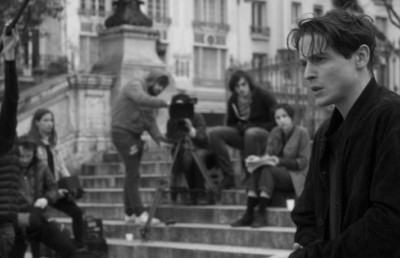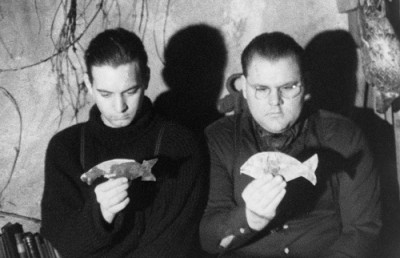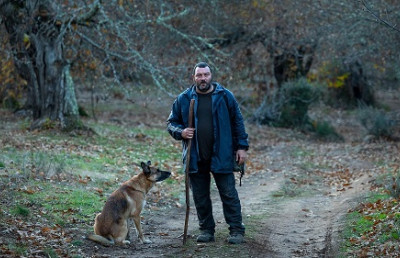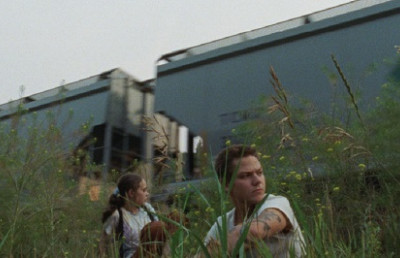Tár, a Maestro of Evasive Intent
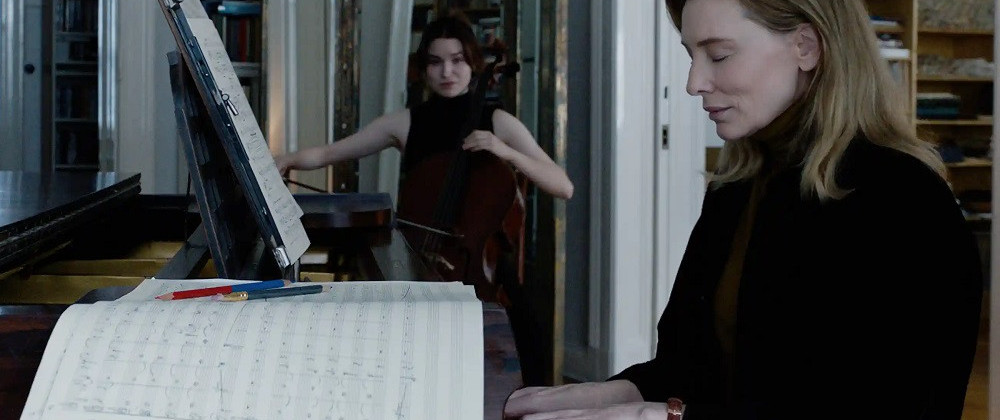
Tár (Image source, Universal Studios)
Todd Field’s 2022 film Tár, which follows a fictionally renowned conductor’s abuse and subsequent loss of power, is a toxic film—but not in the “anti-woman” sense argued by some (Coghlan, 2023). Instead, the film is designed to be, like its protagonist, a master manipulator.
While all narratives must manipulate their audiences to some extent, Tár places this process centre-stage. From its very opening, the film establishes a power dynamic in which it sits the audience down like a pupil, facing them with a lengthy sequence in which the film’s full credits are played in reverse over black. Field explains this directorial decision to the New Yorker’s Michael Schulman, identifying it as the film’s first articulation of its central investigation of the “pyramid of power”. Schulman writes that “by listing the gaffers and sound technicians at the beginning of the movie instead of the end, [Field] inverts the pyramid” (Schulman, 2023). However, by affronting the viewer with such an unconventionally drawn-out opening, felt by some film-goers to be boring and excessive, Field simultaneously makes clear to the audience his own power to enforce his intention upon them, reinforces his own role as maestro.
Indeed, the film’s opening quarter is overwhelmingly didactic, “taken up with harangues and diatribes” (Lebrecht, 2023). The opening credits are followed by an even lengthier, fifteen-minute scene of Lydia Tár being interviewed by the New Yorker’s Adam Gopnik, in which she expounds upon the theory of conducting (“time is the thing”), the silent downbeat of Beethhoven’s fifth, and the varying definitions of fidelity according to the icaros of the Shipibo-Conibo and “Lenny” Bernstein. When viewed in a cinema, the lecture-like nature of such scenes is only strengthened by an awareness of rows of seats before the screen. The opening triplet of scenes heavy with extended dialogue (the interview is followed by Tár’s luncheon with Eliot Kaplan, then her class and ensuing separating-art-from-artist speech at Julliard) have been reviewed by some as a “drag[ging]” “influx” of exposition (Betts, 2023). However, they serve an important function for Field in establishing not only Tár’s chops (as EGOT-winner, as rhetorician), but also those of his own script.
The audience’s sense of Field as cinematic impresario is further reinforced by the decision to film and present the scene of Tár’s Julliard class in one long take. As Donato Totaro (2022) reminds us in a recent essay in this journal, even digitally-captured ‘oners’ require enormous amounts of effort, “choreographic labor and mise en trickery” on the part of filmmakers to pull off. Subsequently, the long-take not only requires the viewer’s prolonged effort of attention but also embeds within the action it depicts, if only latently, an understanding of the skilled work put into it. The opening credits sequence having impressed upon the viewer the scale of the film’s production, its file clerks and head chefs, the viewer is primed even before the narrative properly begins to receive the film as a product of great work, money, and, crucially, intention. They are made to give patience, a concession, to all two hours and thirty-seven of the film’s runtime.
However, whether the film itself is engaged in “intellectually contemplat[ing], or masturbat[ing]” depends upon the extent to which such a forceful impression of directorial control might impinge upon an individual audience member’s engagement with the narrative throughout its course. As crucial plot-points have their resolutions teased rather than provided, Field seemingly operates according to Tár’s own logic that it’s “the question that involves the listener. Never the answer.” Though some critics feel that much of film’s “dramatic work can be opaque” (Pitman, 2023), it is emphatic that the viewer is not alienated; audience-members who are taken in, in the sense of being engaged, are precisely so because they have been taken in, in the sense of being deceived. The audience has been led to trust that they are watching a film made with exacting directorial intent.
Just as Tár controls her own image, as when directing her album-cover photoshoot, this sense of Field’s masterful control over the film’s making is only bolstered by Florian Hoffmeister’s largely locked-off compositions. The film’s smooth surface and slick appearance, as polished as the concrete of Tár’s home or the sheen of her grey Porsche, is only abandoned in select shots in which the film intentionally disrupts and shocks through its calm and collected self-constructed image, intentionally highlighting the extent to which it has missold itself to the audience. The most unnerving of such moments is the sudden lurch into handheld camera operation, and into a set that jarringly scraps the film’s hitherto dominant aesthetic of coolly-lit minimalism, upon Tár’s discovery of her elderly neighbour’s fall, a scene which also reveals the upsetting origin of the two-tone chime upon which Tár has been sedately musing for days. It is noteworthy that the shot directly preceding this encounter, a surreal flash of Tár aflame on a bed in the middle of the jungle that echoes Apichatpong Weerasethakul’s Blue (2018), is one in which the film seems to “catch [itself] in pastiche” (as Tár confesses over lunch to Andris with regard to her writing). Alongside a later vision of a black german shepherd in a waterlogged tunnel that seems straight out of Andrei Tarkovsky’s Stalker (1979), these moments serve as further instances of the film’s jolting confrontations with its own deceptively constructed self-image. [Incidentally, Cate Blanchett is on record as naming Tarkovsky’s Stalker as one of her favorite films, so that may also be another factor behind this otherwise opaque reference., ed.]
Indeed, the narrative beats of Tár’s downfall and loss of power are precisely tracked by such rug-pulling jolts in style and subject. Tár’s vomiting after the fishbowl scene is yet another handheld cinematic shock to the system, while the ending scene of Tár conducting the score to Monster Hunter for an audience of cosplayers similarly derives its impact from intentionally subverting audiences’ expectations for the film’s subject-matter and its cinematic treatment. The closing credits that follow and the bombast of their electronic soundtrack are an affront—part bombshell, part punchline—in stark disjunction with the tone established by the film’s first round of credits, accompanied by singing from Tár’s ethnographic fieldwork in the Amazon. Just as Tár’s final lines “about the composer’s intent” to the youth orchestra are in laughable contrast to her earlier blazing rant upon the topic at Julliard, such points of narrative contrast, markers of Tár’s fall from grace, are precisely powerful because they simultaneously expose the extent to which the film’s audience has been deceived. Narrative and character development are facilitated by and depend upon the audience’s first being led into believing in Tár’s genius, in order to later be spat back out along with her.
However, while Tár’s manipulative genius is dismantled by the film’s end and ridiculed through its latter half (most comically by Olga’s rebuffs), the film makes sure to balance ambushing its audience with keeping them on its side. When Tár returns home from her book tour and turns around to find Sharon unexpectedly waiting behind her, the moment is tellingly not a jump-scare for the audience, to whom the cut reveals Sharon a fraction early, but only for Tár herself, who has now fallen out of step with the film that follows her. In this moment, the film cuts ties with its fallen character but keeps its audience in a privileged point of view. Even as Tár’s expert scheming ends in shambles, the film’s own manipulative genius goes largely unimpeded, remaining, by and large, smooth and controlled. This is epitomised by the sleek tracking-shot following Tár down her hotel corridor in the film’s final unnamed location in South East Asia, in which maids billow bedsheets in perfect rhythm, framed beyond briefly-glimpsed doorways.
Indeed, the matter of the film’s own accountability is of critical importance and dispute. With regard to its many unresolved plot-points, for instance, the film seems to evade answerability. The mysterious drawings that haunt Tár for the first two-thirds or so of the film are dropped rather unsatisfactorily with Francesca’s unexplained disappearance and are last seen on manuscript copies of Tár on Tár found on her floor, the ‘PROOF’ watermark on their pages seeming to mock a lack of narrative explanation.
Conversely, one might argue that, in actual fact, the film has an answer for everything. Many complaints commonly levelled by some against the film can be evaded surprisingly easily if credited to directorial intent. Like the opening credits sequence, moments in which the film appears to be being intentionally difficult can be argued not only intentional but effective. The refusal to subtitle Tár’s German in scenes of her conducting rehearsals, for example, can hardly seem objectionable if viewed as a mechanism for forcing the audience to judge Tár not on her words but her actions, for forcing a victim-oriented narrative perspective in which the audience must read Tár’s attitude towards her players in her effect upon them, in their reactions.
Likewise, several moments in the film that might be deemed clichés—the “blink-and-you’ll-miss-it” (Apaydin, 2023) figure lurking in the shadowy background, the unexplained noise in the dark of the night, the paranoia-wracked protagonist looking over their shoulder at every turn—can all find smart (in the dual senses of intelligent and neat) justification. The cliché of the protagonist haunted by mysteriously scrawled and seemingly indecipherable coded drawings is redeemed by the knowledge (not communicated within the film itself) that they are actually patterns of the kind traditional to the Shipibo-Conibo people from Tár’s past. The cliché of the protagonist privately taking out their pent-up frustration on punching bags is made interesting because she is, in fact, punching to the rhythm of Mozart’s Eine kleine Nachtmusik.
The appearance of Olga’s teddy bear in Tár’s car, only seconds before it compels Tár to follow the celloist into her abandoned, littered digs and to fall both literally- and narratively-speaking, is so astoundingly unprepared and unexplained that some viewers have been led to variously speculate and reason that everything from that point onwards must be “a hallucination or a dream” (Bernstein, 2022). This very doubt, the whirlwind of interpretation that necessarily spirals around any narrative of ambiguity, is precisely cultivated by Field. Perhaps it could be justified as a deliberate parallel to the real-life public doubt that can swarm accusations against celebrity abusers: a similar defense of disbelief in place of disappointment.
In essence, whether or not the film is “trying to sell a car without an engine”, to use Tár’s metaphor from her Julliard class, whether it is “the best film to date on ‘cancel culture’” (Horton, 2022) or “a regressive film that takes bitter aim at so-called cancel culture” (Brody, 2022), entirely rests upon the extent to which one is willing to chalk up the film’s flaws to the same particular kind of demanding virtuosity as Tár herself displays, to deem them prices to pay for compositional genius. The film encourages this kind of rationalisation by granting itself narrative mechanisms within which it can demonstrate a critical self-awareness; such are the cut-aways to the ever-present smartphone-camera livestream opportunities for the film to step outside and commentate upon itself: panning across Tár’s hotel room, it can jeer: “she thinks she’s being ironic”. Likewise, scenes like Tár’s lunches with Andris allow the film to voice rather on-the-nose opinions while simultaneously stepping away from them: Andris’ declaration that “nowadays to be accused is the same as being guilty” is carefully measured as Tár quickly points out in response the inherent overstatement of “equating sexual impropriety with being an accused Nazi”. On such occasions, the film makes clear that it knows what it’s doing and excuses itself.
That criticisms of Tár can so easily be dismissed as part and parcel of a necessarily enigmatic mastery is the product not of an ambiguity of intent, but rather a decisive intent of ambiguity. The film’s very first shot, a livestream of Tár asleep on a private jet, sees deliberately vague questions left up in the air by non-committal responses: “you mean she has a conscience?” “maybe”. In fact, Tár’s rant at Julliard is precisely upon the difficulties surrounding indeterminacies of artistic intent: “So, if her intent is vague, how do you, as a conductor, have a point of view about anything?”
It is as a result of such conditioning that, for instance, Peter Bradshaw’s first review of Tár in The Guardian, upon its premiere at the Venice Film Festival, expresses doubts (“I am not sure that all the film’s disparate and intriguing tics and hints and feints all come satisfactorily together” [Bradshaw, 2022]), while his later review upon the film’s UK release decides that “[a] second viewing has swept away – with hurricane force – the obtuse worries [he] had at the Venice film festival” (Bradshaw, 2023). The film’s flaws are excusable if, as can happen upon multiple viewings when the predictable comes to seem determined, it is granted the same “magnitude and inevitability” of genius that Tár worships in Beethoven and demands for herself.
Tár examines and exposes the workings of manipulation in abuses of power precisely by enacting them within the framework of a film’s own power relation with its audience and within the rhetoric of film’s visual language. Just as parallels between conducting and film directing are rife, Field’s directorial decisions, making Tár formally challenging and narratively teasing throughout, allow the film to cultivate for itself the character and mystique of the difficult-genius maestro. The audience’s awareness of the film as the product of autocratic creative intent is explicitly hammered home by Field from the start and later justifies convenient evasions of intent as the film’s ambiguities flit from obdurate obscurantism to the masterfully beguiling. For this reason, Tár’s brilliance is of precisely the same double-edged kind as its namesake protagonist, the film a character-study that adopts the same strategies and habits as its protagonist.
References
All uncited quotations are from the film’s dialogue.
Apaydin, E. (2023). ‘Tár’ review. Little White Lies, January 10. Accessed online.
Bernstein, J. (@Bernstein) (2022). Twitter, November 16: ‘I’ve deleted all my tweets about Tár. It’s my stance that the last act of the film, from the point that the main character goes into the abandoned building, is a hallucination or a dream. But I don’t need to force that interpretation on anyone else. That’s the beauty of art.’
Betts, E. (2023). ‘TAR review (2022) – Cate Blanchett makes for one hell of a conductor’. The Digital Fix. Accessed online.
Bradshaw, P. (2022). ‘Tár review – Cate Blanchett is colossal as a conductor in crisis’. The Guardian, 1 September. Accessed online.
— (2023). ‘Tár review – Cate Blanchett is perfect lead in delirious, sensual drama’. The Guardian, 11 January. Accessed online.
Brody, R. (2022). ‘“Tár,” Reviewed: Regressive Ideas to Match Regressive Aesthetics’. The New Yorker, October 12. Accessed online.
Coghlan, A. (2023). ‘“I’m offended by Tár as a woman, as a conductor, as a lesbian”: Interview with Marin
Alsop’. The Sunday Times, January 8. Accessed online.
Horton, A. (2022). ‘Oscar-tipped drama Tár thrillingly captures digital and cancel culture’. The Guardian, 26 October. Accessed online.
Lebrecht, N. (2023). ‘Tár is not a bad movie’. Slipped Disc, January 19. Accessed online.
Pitman, R. (2023). ‘Tár Ending Explained (In Detail)’. Screen Rant, February 23. Accessed online.
Schulman, M. (2023). ‘Todd Field’s Long Road to “Tár”’. The New Yorker, January 14. Accessed online.
Totaro, D. (2022). ‘1917: The “Hard Work” of the Digital Long Take’. Offscreen, 26: 9-11. Accessed online. https://offscreen.com/view/1917-the-hard-work-of-the-digital-long-take


